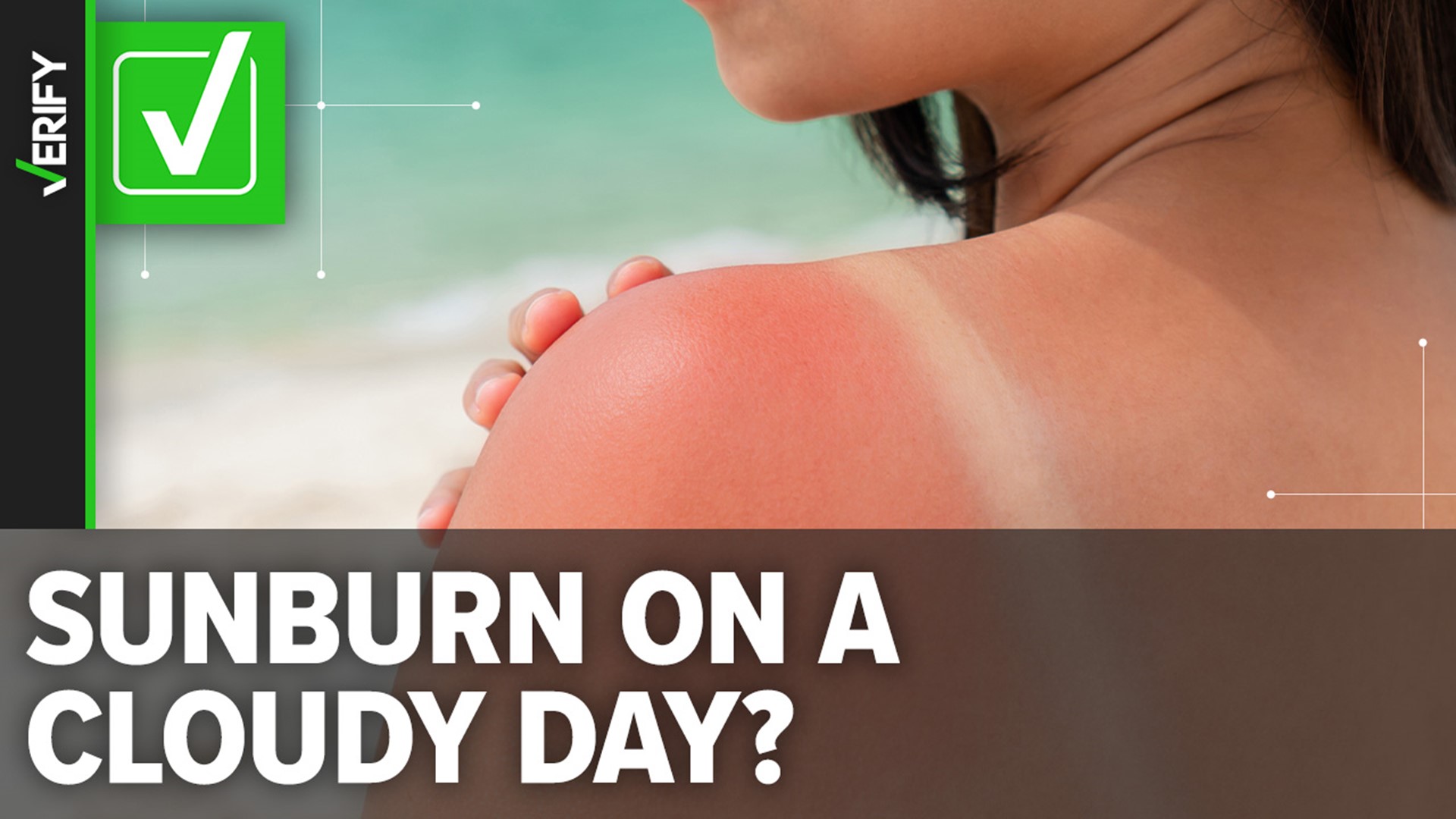When it’s sunny outside, many people remember to put on sunscreen to protect themselves from the sun’s ultraviolet rays. But what about when it’s cloudy?
Some people online claim you can’t get sunburned when clouds are in the sky. We VERIFY whether that’s true or false.
THE QUESTION
Can you get a sunburn on a cloudy day?
THE SOURCES
- Centers for Disease Control and Prevention (CDC)
- Environmental Protection Agency (EPA)
- Mayo Clinic
- University of Texas MD Anderson Cancer Center
- Adam Friedman, M.D., professor and chair of dermatology at George Washington University School of Medicine and Health Sciences
- Sara Lamb, M.D., assistant professor of dermatology at Virginia Commonwealth University
THE ANSWER
Yes, you can get a sunburn on a cloudy day.
WHAT WE FOUND
It is possible to get a sunburn on a cloudy day, according to the Centers for Disease Control and Prevention (CDC), the Environmental Protection Agency (EPA), the Mayo Clinic and the University of Texas MD Anderson Cancer Center.
When the sun is in the sky it is emitting ultraviolet (UV) radiation, which is a form of non-ionizing radiation emitted by the sun and artificial sources, such as tanning beds, according to the CDC. Sunburn is caused by too much exposure to UV light.
“Unprotected skin can be damaged by the sun’s ultraviolet rays in as little as 15 minutes,” the CDC says on its website. “Even if it’s cool and cloudy, you still need protection—UV rays, not the temperature, do the damage.”
The Mayo Clinic says sunburn often appears within a few hours of being in the sun too long. Sunburn symptoms can include:
- Inflamed skin, which looks pink or red on white skin and may be harder to see on brown or Black skin
- Skin that feels warm or hot to the touch
- Pain, tenderness and itching
- Swelling
- Small, fluid-filled blisters, which may break
- Headache, fever, nausea and fatigue, if the sunburn is severe
- Eyes that feel painful or gritty
Although clouds may block bright sunlight, they are just made out of water vapor, which doesn’t block the sun’s harmful UV rays, according to the University of Texas MD Anderson Cancer Center. This means it’s possible to get sunburned even when the sun is blocked by clouds.
“Clouds don't really block that much UV radiation, so you're getting pretty much a very similar exposure that you would get on a sunny day,” dermatologist Sara Lamb told VERIFY.
To protect yourself from getting a sunburn, you can follow these tips from the Mayo Clinic:
- Avoid sun exposure between 10 a.m. and 4 p.m. The sun's rays are strongest during these hours, so try to schedule outdoor activities for other times. If you can't do that, limit the time you're in the sun and seek shade when possible.
- Avoid sun tanning and tanning beds. Getting a base tan doesn't decrease your risk of sunburn. If you use a self-tanning product to look tan, you should also apply sunscreen before going outdoors.
- Use sunscreen often and generously. Use water-resistant, broad-spectrum lip balm and sunscreen with an SPF of at least 30, even on cloudy days.
“Often we are a little more lax when we don't feel the sun or see the sun,” said dermatologist Adam Friedman. “Every day is a sun protection day — and I mean that with respect to exposed areas, rain or shine, you should be thinking about how to protect yourself from the harmful effects of ultraviolet radiation.”

